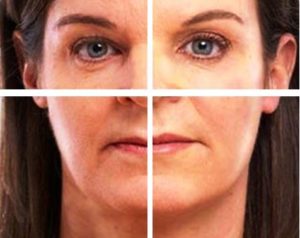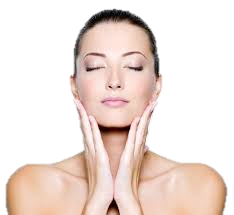Hyaluronic Acid and Sodium Hyaluronate…
 If there is a word that is in vogue in skin care, it’s hyaluronic… but there is a word related to it that is perhaps not so well known, but which is highly valued at Sirène Nature: Sodium Hyaluronate.
If there is a word that is in vogue in skin care, it’s hyaluronic… but there is a word related to it that is perhaps not so well known, but which is highly valued at Sirène Nature: Sodium Hyaluronate.
The list of benefits is, as a hydrating agent within skincare formulas, simply impressive as it visibly plumps, hydrates and refines skin texture.
Let’s find out what are the differences between hyaluronic acid and sodium hyaluronate and what are the benefits for our skin. Now we are going to explain it to you.
In any of the presentations of hyaluronic acid, its benefits will help us to have glowing skin, since we can find it in a huge variety of shapes, sizes, presentations, and formulas.
The most crucial and the one we try to encourage is the one found naturally in our bodies.
Let’s start by defining what hyaluronic acid is
Hyaluronic acid is a molecule (a polysaccharide) found naturally in the skin, as well as the connective tissue of our bodies, acting as a cushioning and lubricating agent for our joints, skin, nerves, hair, and eyes.
Its main uses and benefits are to keep skin moist and lubricated, as it is a moisture binder, which means it binds water into cells, plumping them up.
into cells, plumping them up.
Hyaluronic acid itself can draw moisture from the air and keep skin moist. It is capable of holding hundreds of times its own weight in water, so it is not just a humectant, it also has the ability to retain extra moisture. This is crucial because, as we age, the levels of hyaluronic acid in our body decrease and it is reflected in our skin, making it drier and more prone to wrinkles.
How natural is hyaluronic acid?
Although this substance occurs naturally in the human body, it is not necessarily considered a ‘natural’ ingredient in skin care, as it must go through a chemical transformation in order to be used topically.
This is because hyaluronic acid has a large molecular weight and therefore does not penetrate the skin. One way to reduce the molecule size of this acid is through hydrolyzation (breaking it down by doing a chemical reaction with water) which results in the hydrolyzed hyaluronic acid commonly seen in serums and moisturizers.
The most common way to convert pure hyaluronic acid into a useful topic is to extract its sodium salt to obtain sodium hyaluronate, a derivative of hyaluronic acid; specifically, it is a salt form of the acid.
 Sodium hyaluronate has a much lower molecular weight than hyaluronic acid and hydrolyzed hyaluronic acid, so it is more easily absorbed into the pores. Sodium hyaluronate has the ability to penetrate into the deeper layers of the skin and accumulates the water present and this plumps the skin, reducing wrinkles and making the skin look smoother and younger.
Sodium hyaluronate has a much lower molecular weight than hyaluronic acid and hydrolyzed hyaluronic acid, so it is more easily absorbed into the pores. Sodium hyaluronate has the ability to penetrate into the deeper layers of the skin and accumulates the water present and this plumps the skin, reducing wrinkles and making the skin look smoother and younger.
As we have already seen, both hyaluronic acid and sodium hyaluronate are used in beauty products.
In many cases, serum manufacturers claim that their formulas contain 75% or more hyaluronic acid. This is not possible because sodium hyaluronate does not come in a pure form, it comes in the form of a 1% to 2% solution and this solution is mostly made up of water. What’s more, if it were above 3%, instead of moisturizing the skin it could dry it out.
In conclusion
Hydrolyzed Hyaluronic Acid works at the surface level (dermis) to smooth and hydrate, and Sodium Hyaluronate does the same at a deeper level (epidermis), helping to reduce the signs of aging. Both forms have their advantages, one being that they can be used together, depending on the desired effects.
When a serum or cream containing sodium hyaluronate is applied to the skin in dry conditions, where humidity is low, it will draw moisture from where it can find it.
it will draw moisture from where it can find it.
If it cannot get moisture from the air, it will draw moisture from the deeper layers of the skin and bring it to the surface of the epidermis, where it will evaporate, leaving the skin dry.
To avoid this, at Sirène Nature we have designed our formulas to be a great team for your skin.
The perfect result and effects are achieved using the “U” Essentials (choosing the most appropriate for your skin type) in conjunction with the Anti-Aging Cream and Serum to seal this moisture within the skin and achieve the anti-wrinkle and rejuvenating effect we are looking for.
 Scan this code with your phone if you love your skin… You’ll love it!
Scan this code with your phone if you love your skin… You’ll love it!
